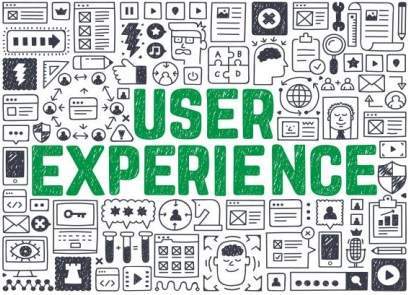Content Delivery Networks (CDNs) significantly enhance the user experience in e-learning platforms by improving content delivery efficiency and reliability. Here’s how CDNs benefit e-learning:

1. Optimize Content Delivery Speed:

- CDNs distribute content from geographically dispersed servers, reducing the physical distance between users and the content source.
- This results in faster content loading times, particularly for large files such as videos or simulations.
2. Reduce Latency and Buffering:

- CDNs use different caching and routing techniques to minimize latency and buffering issues.
- By storing content closer to users, CDNs eliminate network bottlenecks and ensure smooth streaming of videos and interactive simulations.
3. Increase Scalability and Reliability:
- CDNs provide a highly scalable and reliable platform for e-learning content delivery.
- They can handle sudden traffic spikes, ensuring that users can access content without interruptions or slowdowns.
- This is crucial for platforms with a large number of concurrent users.
4. Enhance Video Quality:
- CDNs optimize video delivery by using adaptive bitrate streaming (ABR) techniques.
- ABR adjusts the video quality based on the available bandwidth, providing users with the best possible viewing experience regardless of their connection speed.
5. Support Mobile and Remote Access:
- CDNs deliver content seamlessly across different devices and network conditions, including mobile devices and remote locations.
- This ensures that learners can access e-learning materials anywhere, anytime, without compromising the user experience.
6. Improve Security and Privacy:
- CDNs can implement security measures to protect e-learning content from unauthorized access and threats.
- They can encrypt data in transit and at rest, ensuring the confidentiality and integrity of user information.
7. Reduce Infrastructure Costs:
- By offloading content delivery from in-house servers to a CDN, e-learning platforms can save on infrastructure costs.
- CDNs provide a cost-effective way to deliver high-quality content without the need for extensive hardware or bandwidth upgrades.
8. Provide Analytics and Insights:
- Some CDNs offer analytics tools that provide insights into content delivery performance.
- This data can help e-learning platforms optimize content and improve the user experience over time.
Overall, CDNs are essential tools for e-learning platforms to deliver a seamless, engaging, and reliable user experience. They improve content delivery speed, reduce latency, enhance video quality, and provide scalability, security, and cost-effectiveness.## How Cdns Enhance The User Experience In E-learning Platforms
Executive Summary
Content Delivery Networks (CDNs) play a crucial role in enhancing the user experience in e-learning platforms by optimizing content delivery, reducing latency, and improving overall performance. This article explores the multifaceted benefits of CDNs in e-learning, highlighting key subtopics such as content caching, adaptive bitrate streaming, load balancing, security, and analytics. By leveraging the capabilities of CDNs, e-learning providers can create a seamless and engaging learning environment for their students.
Introduction
In the realm of e-learning, delivering high-quality content efficiently is paramount to ensuring a positive user experience. Content Delivery Networks (CDNs) have emerged as a game-changer in this domain, offering a suite of solutions to enhance performance, reliability, and accessibility of e-learning content. This article delves into the multifaceted benefits of CDNs, exploring their role in optimizing content delivery, reducing latency, and improving overall platform performance.
FAQs
Q: What is a Content Delivery Network (CDN)?
A: A CDN is a geographically distributed network of servers that cache and deliver content over the internet, enabling faster and more reliable access to digital resources.
Q: How do CDNs improve the user experience in e-learning platforms?
A: CDNs enhance the user experience by reducing loading times, optimizing video streaming, and providing secure access to educational content.
Q: What are the key benefits of using CDNs in e-learning?
A: Key benefits include improved content delivery speed, reduced latency, increased reliability, enhanced security, and detailed analytics for content performance.
Content Caching
Content caching is a foundational element of CDN functionality. CDNs strategically place cached copies of content on servers located near users, minimizing the distance that data needs to travel. This significantly reduces loading times, especially for large files such as videos and interactive simulations.
Important Aspects:
- Edge Servers: CDNs deploy edge servers at strategic points of presence (PoPs) close to users.
- Caching Policies: Caching policies determine which content is cached and for how long, optimizing performance based on usage patterns.
- Cache Invalidation: Mechanisms ensure that cached content remains up-to-date and reflects the latest changes.
- Prefetching: Smart prefetching algorithms predict content that users may need and cache it proactively, further improving load times.
- Multi-CDN: Utilizing multiple CDNs enhances redundancy and reliability by distributing content across different networks.
Adaptive Bitrate Streaming
Adaptive bitrate streaming adapts the quality of video content based on the user’s internet connection speed. This ensures a smooth and uninterrupted viewing experience, regardless of bandwidth fluctuations.
Important Aspects:
- Video Transcoding: CDNs transcode videos into multiple bitrates, allowing users to select the optimal quality for their connection.
- Adaptive Algorithm: The streaming algorithm dynamically adjusts the bitrate based on real-time network conditions.
- Buffering Optimization: CDNs implement techniques to minimize buffering and ensure a seamless viewing experience.
- Support for All Devices: Adaptive bitrate streaming supports all major devices and platforms.
- Reduced Latency: Lower latency enhances the overall video experience and reduces interruptions.
Load Balancing
E-learning platforms often experience fluctuating traffic. CDNs employ load balancing techniques to distribute incoming requests across multiple servers, preventing overloading and ensuring optimal performance.
Important Aspects:
- Traffic Monitoring: CDNs constantly monitor traffic patterns to identify potential bottlenecks.
- Server Allocation: Load balancers automatically allocate requests to the best-performing servers based on factors like load and latency.
- Failover Mechanisms: In case of server issues, failover mechanisms redirect requests to alternate servers, ensuring uninterrupted service.
- Scalability: Load balancing enables e-learning platforms to scale seamlessly as demand increases.
- Reduced Downtime: Load balancing minimizes the likelihood of outages and downtime, enhancing platform availability.
Security
Cybersecurity is paramount in e-learning platforms. CDNs offer robust security features to protect user data and content from unauthorized access.
Important Aspects:
- SSL/TLS Encryption: CDNs encrypt data in transit using Secure Sockets Layer (SSL)/Transport Layer Security (TLS) protocols.
- DDoS Mitigation: CDNs implement distributed denial-of-service (DDoS) protection to safeguard against malicious attacks.
- Content Origin Protection: CDNs protect the original content source from unauthorized access.
- Compliance with Regulations: CDNs adhere to industry standards and regulations, providing peace of mind for e-learning providers.
- Regular Security Audits: CDNs undergo regular security audits to ensure compliance and identify potential vulnerabilities.
Analytics
CDNs provide valuable insights into content performance and user behavior. Analytics dashboards offer detailed reports on metrics like load times, bandwidth usage, and geographic distribution of users.
Important Aspects:
- Performance Monitoring: Analytics provide real-time insights into the performance of e-learning platforms.
- User Behavior Analysis: Data on user behavior helps e-learning providers optimize content delivery strategies.
- Content Optimization: Analytics enable platforms to identify underperforming content and make improvements accordingly.
- Troubleshooting: Detailed analytics assist in troubleshooting performance issues and identifying areas for improvement.
- Decision-Making Support: Analytics empower e-learning providers with data-driven insights for informed decision-making.
Conclusion
Content Delivery Networks (CDNs) play an indispensable role in transforming the user experience on e-learning platforms. Their ability to optimize content delivery, reduce latency, enhance security, and provide valuable analytics makes them an essential tool for creating a seamless and engaging learning environment. By leveraging the capabilities of CDNs, e-learning providers can captivate learners, improve knowledge retention, and drive educational outcomes.
Keyword Tags
- Content Delivery Networks (CDNs)
- E-learning Platforms
- User Experience Optimization
- Content Caching
- Adaptive Bitrate Streaming
